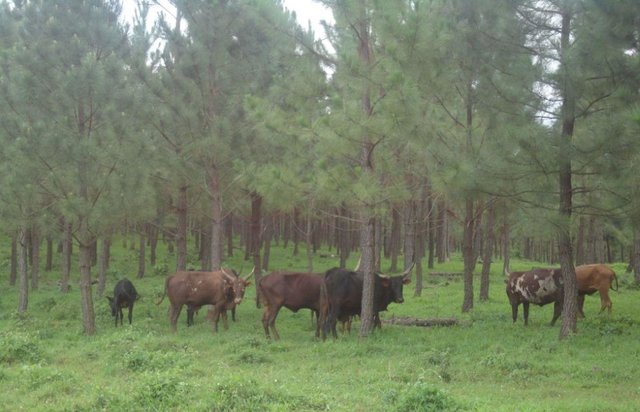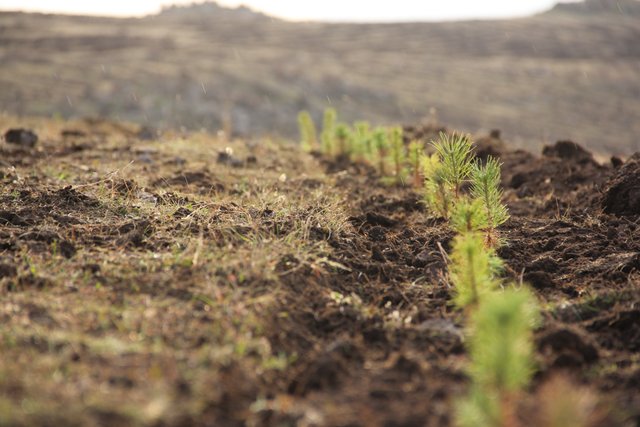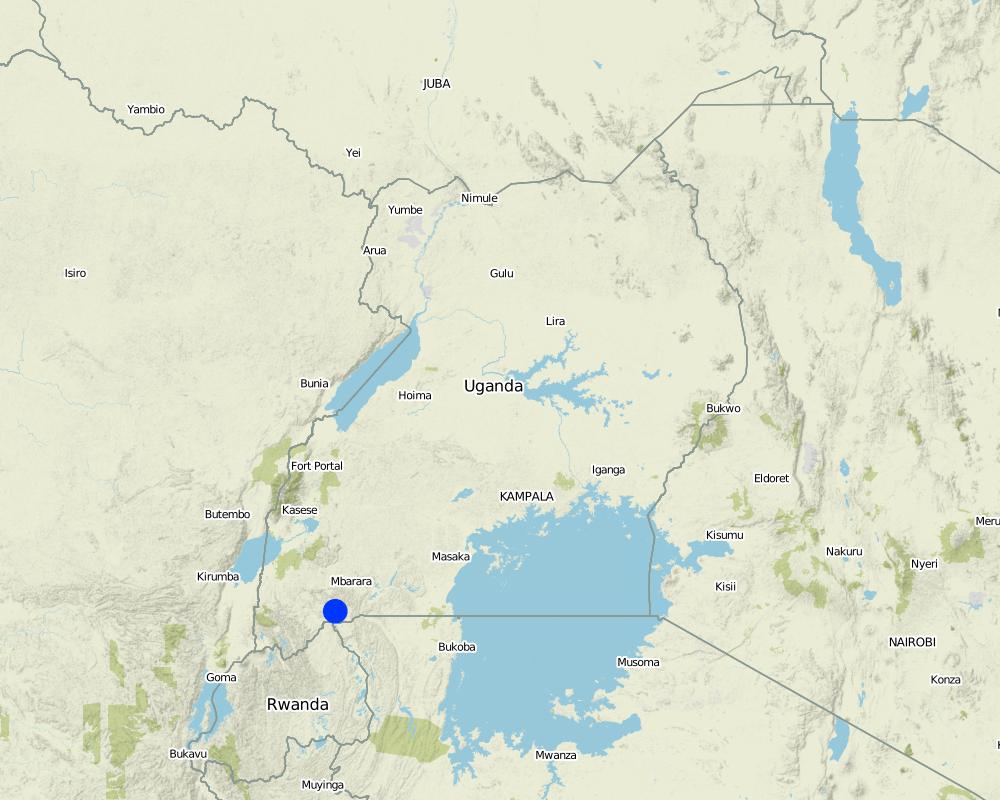Afforestation/Tree planting [Ouganda]
- Création :
- Mise à jour :
- Compilateur : Wilson Bamwerinde
- Rédacteur : –
- Examinateur : Fabian Ottiger
Okuhinga emiti.
approaches_2587 - Ouganda
Voir les sections
Développer tout Réduire tout1. Informations générales
1.2 Coordonnées des personnes-ressources et des institutions impliquées dans l'évaluation et la documentation de l'Approche
Spécialiste GDT:
Mazimakwo Kukundakwe
Kabale District
Ouganda
Spécialiste GDT:
Mushabe Joshua
Ntungamo District
Ouganda
Spécialiste GDT:
Tugaine Richard
Ntungamo District
Ouganda
Spécialiste GDT:
Matsiko Polly
0782900819
Nshenyi, Kitwe Town Council
Ouganda
Nom du projet qui a facilité la documentation/ l'évaluation de l'Approche (si pertinent)
The Transboundary Agro-ecosystem Management Project for the Kagera River Basin (GEF-FAO / Kagera TAMP )Nom du ou des institutions qui ont facilité la documentation/ l'évaluation de l'Approche (si pertinent)
Ntungamo District - OugandaNom du ou des institutions qui ont facilité la documentation/ l'évaluation de l'Approche (si pertinent)
Kabale District Local Government (Kabale District Local Government) - OugandaNom du ou des institutions qui ont facilité la documentation/ l'évaluation de l'Approche (si pertinent)
Kitwe Town Council - Ouganda1.3 Conditions relatives à l'utilisation par WOCAT des données documentées
Quand les données ont-elles été compilées (sur le terrain)?
19/04/2013
Le compilateur et la(les) personne(s) ressource(s) acceptent les conditions relatives à l'utilisation par WOCAT des données documentées:
Oui
1.4 Références au(x) questionnaire(s) sur les Technologies de GDT

Afforestation /Tree planting [Ouganda]
Pine tree forests have been strategically planted on previously bare ridges and slopes to mitigate mass soil movement.
- Compilateur : Wilson Bamwerinde

High-altitude afforestation for erosion control [Arménie]
Afforestation is a key technologies to protect soil against erosion and provide a wide range of ecosystem services. In this case, afforestation at high altitudes, which is particularly challenging, with the primary purpose of erosion control were planted in small patches with different methods. They form the basis for future …
- Compilateur : Hanns Kirchmeir
2. Description de l'Approche de GDT
2.1 Courte description de l'Approche
Tree planting carried out by individual land users on hilly slopes to improve soil cover ,reduce wind strength , provide wood fuel & household income.
2.2 Description détaillée de l'Approche
Description détaillée de l'Approche:
Aims / objectives: -To conserve the degraded hill by planting trees and reduce soil erosion.
-To reduce wind strength.
-To increase sources of fuel wood.
-To diversify sources of future household income.
Methods: -Mobilization of farmer field members to participate in tree planting , to increase tree cover in the area.
-Facilitation of planning meetings for farmer field school members in identifying tree planting needs.
-Purchase and raising of tree seedlings and tree nursery beds for tree seedlings.
-Distribution of tree seedlings to willing farmer school members for planting.
-Provision of training in tree planting technologies prior to distribution.
-Tree planting and management.
Stages of implementation: -Planning of tree planting needs.
-Purchase of tree seedlings and raising of indigenous tree seedlings.
-identification of planting sites.
-capacity building in tree planting technologies.
-making of holes for planting tree seedlings.
-Making of holes for tree planting seedlings.
-Planting of tree seedlings.
Role of stakeholders: -Mobilization of farmer field school members by service providers.
-Training the beneficiary members in tree planting by service providers/facilitators.
-Provision of funds for purchase of tree seedlings by FAO under the Kagera TAMP project.
Other important information: The land users and the farmer field school members had seen tree planting activities in neighbouring areas but they had thought that such activities could only be done by government.
But through mobilization farmers have realized the importance and possibility of farmers benefiting from tree planting.
2.5 Pays/ région/ lieux où l'Approche a été appliquée
Pays:
Ouganda
Région/ Etat/ Province:
Uganda
Autres spécifications du lieu :
Ntungamo
Map
×2.6 Dates de début et de fin de l'Approche
Indiquez l'année de démarrage:
2011
Date (année) de fin de l'Approche (si l'Approche n'est plus appliquée):
2015
2.7 Type d'Approche
- fondé sur un projet/ programme
2.8 Principaux objectifs de l'Approche
The Approach focused mainly on SLM with other activities (Reduction of wind strength ,provision of wood fuel and contribute to household income. )
-To conserve degraded hill slopes against erosion due to overstocking.
-To reduce wind strength in the area by increasing tree cover in the area.
-To increase source of wood fuel in the area.
-To diversify the future source of household incomes in the area among the communities.
The SLM Approach addressed the following problems: -To reduce soil erosion on degraded hill slopes.
-To reduce the strength of which wind affect the area in rainy seasons.
-To increase access to wood fuel sources.
-To diversify future household income.
-To get cheap timber for staking bananas.
2.9 Conditions favorisant ou entravant la mise en œuvre de la(des) Technologie(s) appliquée(s) sous l'Approche
normes et valeurs sociales/ culturelles/ religieuses
- entrave
Lack of initiative to undertake tree planting.
Treatment through the SLM Approach: mobilization and sensitization into farmer field school approach.
disponibilité/ accès aux ressources et services financiers
- entrave
Inadequate funds for tree seedling purchase.
Treatment through the SLM Approach: Seek assistance from FAO.
cadre juridique (régime foncier, droits d'utilisation des terres et de l'eau)
- favorise
The existing land ownership, land use rights / water rights greatly helped the approach implementation: Land user owns the land and thus did not face any resistance.
connaissances sur la GDT, accès aux supports techniques
- entrave
Inadequate capacity on tree planting technologies and values in tree planting.
Treatment through the SLM Approach: Mobilization and training /sensitization in tree planting benefits.
3. Participation et rôles des parties prenantes impliquées dans l'Approche
3.1 Parties prenantes impliquées dans l'Approche et rôles
- exploitants locaux des terres / communautés locales
Farmer field school members , Facilitators
- Spécialistes de la GDT/ conseillers agricoles
Farmer field trainers
- organisation internationale
- Facilitators
3.2 Participation des exploitants locaux des terres/ communautés locales aux différentes phases de l'Approche
| Participation des exploitants locaux des terres/ communautés locales | Spécifiez qui était impliqué et décrivez les activités | |
|---|---|---|
| initiation/ motivation | soutien extérieur | The land users were mobilized by national project coordinator. |
| planification | soutien extérieur | The land users were mobilized and facilitated to identify their problems related to environmental degradation & priorities were made. |
| mise en œuvre | auto-mobilisation | Land users were responsible for tree planting. |
| suivi/ évaluation | soutien extérieur | Project officials are to undertake M&E. |
| Research | aucun |
3.4 Prises de décision pour la sélection de la Technologie/ des Technologies
Indiquez qui a décidé de la sélection de la Technologie/ des Technologies à mettre en œuvre:
- principalement les exploitants des terres soutenus par des spécialistes de la GDT
Expliquez:
After mobilization and sensitization of the land users in farmer field schools ,the land users decided to under take tree planting.
Decisions on the method of implementing the SLM Technology were made by mainly by land users supported by SLM specialists. Land users made decision on the technology alone.
4. Soutien technique, renforcement des capacités et gestion des connaissances
4.1 Renforcement des capacités/ formation
Une formation a-t-elle été dispensée aux exploitants des terres/ autres parties prenantes?
Oui
Spécifiez qui a été formé:
- exploitants des terres
Formats de la formation:
- entre agriculteurs (d'exploitants à exploitants)
- zones de démonstration
4.2 Service de conseils
Les exploitants des terres ont-ils accès à un service de conseils?
Oui
Spécifiez si le service de conseils est fourni:
- dans des centres permanents
Décrivez/ commentez:
Name of method used for advisory service: Training and awareness.; Key elements: mobilization, identification of problems related to land degradation. , Ranking of severity of land degradation types. SLM approaches were then selected by land users after analysis & synthesis of the problems.
Advisory service is inadequate to ensure the continuation of land conservation activities; Land use needs continuous follow-up and little support provided in terms of financial & advisory.
4.3 Renforcement des institutions (développement organisationnel)
Des institutions ont elles été mises en place ou renforcées par le biais de l'Approche?
- non
4.4 Suivi et évaluation
Le suivi et l'évaluation font ils partie de l'Approche? :
Oui
Commentaires:
technical aspects were regular monitored by land users through observations; indicators: Progress of tree growth.
There were few changes in the Approach as a result of monitoring and evaluation
There were no changes in the Technology as a result of monitoring and evaluation
4.5 Recherche
La recherche a-t-elle fait partie intégrante de l’Approche?
Oui
- Baseline survey on the needs assessment.
Donnez plus de détails et indiquez qui a mené ces recherches:
Trainers of farmer field schools mobilized farmer field school land users ,who identified their problems and how they can be solved.
Research was carried out on-farm
5. Financement et soutien matériel externe
5.1 Budget annuel de la composante GDT de l'Approche
Si le budget annuel précis n'est pas connu, indiquez une fourchette:
- < 2 000
Commentez (par ex. principales sources de financement/ principaux bailleurs de fonds):
Approach costs were met by the following donors: international (FAO): 70.0%; local community / land user(s) (mobilization,facilitation of meals during trainings.etc): 30.0%
5.2 Soutiens financiers/ matériels fournis aux exploitants des terres
Les exploitants des terres ont-ils reçu un soutien financier/ matériel pour la mise en œuvre de la Technologie/ des Technologies?
Oui
5.3 Subventions pour des intrants spécifiques (incluant la main d'œuvre)
- équipement
| Spécifiez les intrants subventionnés | Dans quelle mesure | Spécifiez les subventions |
|---|---|---|
| outils | en partie financé | |
- intrants agricoles
| Spécifiez les intrants subventionnés | Dans quelle mesure | Spécifiez les subventions |
|---|---|---|
| fertilisants | en partie financé | |
Si la main d'œuvre fournie par les exploitants des terres était un intrant substantiel, elle était:
- vivres-contre-travail
Commentaires:
Food for work, paid in cash and rewarded with other material support
Shs 5000 each person per day.
most funds provided by FAO and small proportion by land users.
5.4 Crédits
Des crédits ont-ils été alloués à travers l'Approche pour les activités de GDT?
Non
6. Analyses d'impact et conclusions
6.1 Impacts de l'Approche
Est-ce que l'Approche a aidé les exploitants des terres à mettre en œuvre et entretenir les Technologies de GDT?
- Non
- Oui, un peu
- Oui, modérément
- Oui, beaucoup
-Retardation of soil erosion. -Provision of soil cover.
Est-ce que l'Approche a autonomisé les groupes socialement et économiquement défavorisés?
- Non
- Oui, un peu
- Oui, modérément
- Oui, beaucoup
No disadvantaged group involved.
Did other land users / projects adopt the Approach?
- Non
- Oui, un peu
- Oui, modérément
- Oui, beaucoup
2 to 7 land users adopted the approach towards tree planting.
Did the Approach lead to improved livelihoods / human well-being?
- Non
- Oui, un peu
- Oui, modérément
- Oui, beaucoup
Did the Approach help to alleviate poverty?
- Non
- Oui, un peu
- Oui, modérément
- Oui, beaucoup
The trees have not yet matured for harvesting.
6.2 Principale motivation des exploitants des terres pour mettre en œuvre la GDT
- augmenter la production
- augmenter la rentabilité/ bénéfice, rapport coûts-bénéfices
generate income.
- règles et règlements (amendes)/ application
generate income.
- conscience environnementale
conserve the environment
- well-being and livelihoods improvement
6.3 Durabilité des activités de l'Approche
Les exploitants des terres peuvent-ils poursuivre ce qui a été mis en œuvre par le biais de l'Approche (sans soutien extérieur)?
- oui
6.4 Points forts/ avantages de l'Approche
| Points forts/ avantages/ possibilités du point de vue de l'exploitant des terres |
|---|
| 1. Green environment (How to sustain/ enhance this strength: Plant more trees. ) |
| 2. Reduce global warming (How to sustain/ enhance this strength: Plant more trees for carbon absorption.) |
| 3. Cool environment (How to sustain/ enhance this strength: Plant more trees on the bare hills.) |
| 4. Increase productivity. (How to sustain/ enhance this strength: Better monitoring and evaluation. ) |
| Points forts/ avantages/ possibilités du point de vue du compilateur ou d'une autre personne ressource clé |
|---|
| 1. Control of soil erosion. (How to sustain/ enhance this strength: Plant more trees. ) |
| 2.Improved soil cover. (How to sustain/ enhance this strength: Plant more trees. ) |
| 3. Reduction of wind speed. (How to sustain/ enhance this strength: Plant more trees in wind prone areas.) |
| 4. Increase wood fuel in future. |
6.5 Faiblesses/ inconvénients de l'Approche et moyens de les surmonter
| Faiblesses/ inconvénients/ risques du point de vue de l’exploitant des terres | Comment peuvent-ils être surmontés? |
|---|---|
| 1. It is costly. | Subsidize land users. |
| 2. Long term returns. | Plant some quick maturing trees. |
| Faiblesses/ inconvénients/ risques du point de vue du compilateur ou d'une autre personne ressource clé | Comment peuvent-ils être surmontés? |
|---|---|
| 1. It is costly to plant trees. | Provide subsides to land users who are practicing the technology. |
7. Références et liens
7.1 Méthodes/ sources d'information
- visites de terrain, enquêtes sur le terrain
- interviews/entretiens avec les exploitants des terres
7.2 Références des publications disponibles
Titre, auteur, année, ISBN:
1. Managemenrt plan for sawlog production ,Project proposal by Tibesigwa Mukasa,2006.
Liens et modules
Développer tout Réduire toutLiens

Afforestation /Tree planting [Ouganda]
Pine tree forests have been strategically planted on previously bare ridges and slopes to mitigate mass soil movement.
- Compilateur : Wilson Bamwerinde

High-altitude afforestation for erosion control [Arménie]
Afforestation is a key technologies to protect soil against erosion and provide a wide range of ecosystem services. In this case, afforestation at high altitudes, which is particularly challenging, with the primary purpose of erosion control were planted in small patches with different methods. They form the basis for future …
- Compilateur : Hanns Kirchmeir
Modules
Aucun module trouvé


